Cream of the design crop
A new award celebrates Singapore's top talents under the age of 45.

WITH 17 years of interior design experience under his belt, Brandon Fee, senior associate project manager at LWK + Partners, has seen how his profession has evolved over the years.
"It has progressed a long way from the material selection and decoration in the past," says Mr Fee, a council member of the Society of Interior Designers Singapore (SIDS).
"Many fellow practitioners are leaders in their respective fields through research and experimentation. All contribute to the betterment of society, be it through enhancing user experience via biophilic design or ensuring long-term sustainability."
SIDS recently unveiled its inaugural 20 UNDER 45 Awards, recognising interior designers under the age of 45 who have made an impact through their works.
SIDS president Keat Ong says: "With the maturity of the interior design (ID) profession in Singapore, it's time to celebrate the best young design minds in the ID industry, and pay tribute to the great work they do, both in Singapore and internationally."
Some of the winners include award-winning designers such as Cherin Tan from LAANK, Dennis Cheok from UPSTRS_ and Pan Yi Cheng from Produce Workshop.
Navigate Asia in
a new global order
Get the insights delivered to your inbox.
Mr Fee, who is also chairperson of the awards, adds: "We want to empower more designers to push and challenge themselves. This allows us to continually spotlight the best that the industry has to offer, reflecting the ever-changing interior design fraternity."
Patricia Ho Douven Principal, White Jacket
Although Patricia Ho Douven hasn't seen any significant changes in her hotel clients' briefs, she does see a definite move "from globalisation to localisation".
Ms Ho Douven, 42, is the founder of White Jacket design firm which specialises in hospitality and food and beverage (F&B) design.
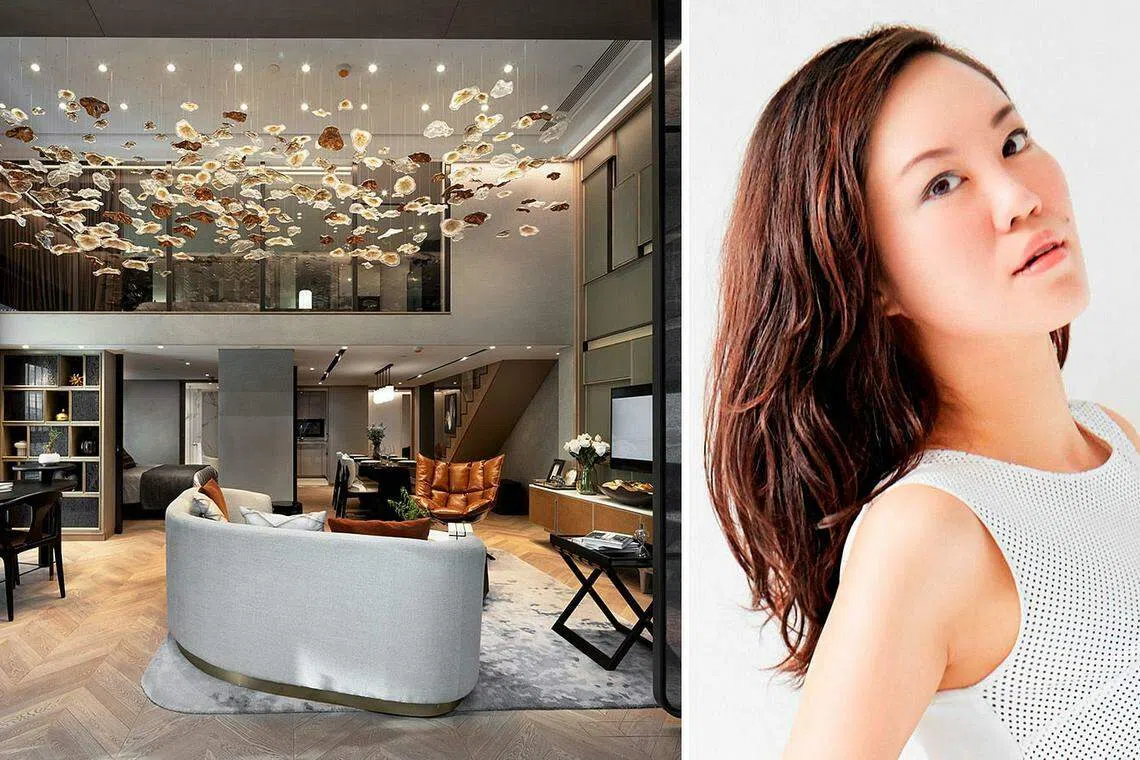
She foresees a bigger shift to the domestic market compared to the pre-pandemic days when hotels catered more to international travellers. She also expects urban and business hotels to revert to larger guest rooms instead of more spacious public spaces.
"Some guests may prefer to work in their rooms which offer a more controlled and cleaner environment, rather than using the facilities in the hotel public areas," she says.
Restaurants would offer more flexible seating arrangements too. "For most of the restaurants on the ground floor, we would create a takeaway counter whenever possible," she says.
She describes herself as a passionate traveller, storyteller first and designer second. "This is why I fell in love with hospitality and F&B design. It is very empowering for me to be in the position to provide an experience to people through my design. Design is my medium to tell a story," she says.
White Jacket's current projects include a Kimpton resort in Bali, a resort for JW Marriott in the Maldives, and a Rosewood hotel in Ningbo.
The jury panel was impressed not only with the firm's client list but also with Ms Ho Duoven's versatile approach in meeting the various hotel groups' different and stringent requirements.
Ms Ho Douven says she finds inspiration through her travels. With border restrictions still in place, she is taking the inability to travel in her stride.
"Designing hotels requires frequent communication and coordination with various professionals. Our works are widespread in Asia and a challenge for us is to maintain relationships with our clients and working partners," she says.
When she started White Jacket in 2010, she faced a different kind of challenge: gaining trust and recognition from clients, especially when hospitality projects take many years to complete.
"I wanted to build my portfolio fast to showcase our talent. So I focused only on refurbishment projects during the early years."
White Jacket's first hotel project was New World Makati in Manila, followed by the refurbishment of the Naumi Hotel in Seah Street.
"These projects brought us recognition by the industry leaders and we have won numerous international design awards since their completion," she says.
Matilda Sung Partner, Graphite Studio
For interior designer Matilda Sung, there has never been a more exciting time than now. "It is amazing how the pandemic has accelerated the evolution of workplace behaviour and its design in turn," says Ms Sung, 41, a partner at Graphite Studio.

The firm has since transformed the offices of several multinational organisations to support hybrid work.
Ms Sung says: "The function of the office has become more meaningful as people choose to be there to connect face to face with their co-workers. The office will be centred on work diversity, community and team belongingness."
She adds that companies will prioritise employee well-being both in and outside the workplace.
"The new workplace will be highly flexible and adaptable, allowing the users to reconfigure their environment quickly and easily to suit fast-changing requirements. Designers will have to design the office as a physical and virtual concept," says Ms Sung.
The firm's clients include HSBC and law firm Norton Rose Fulbright.
While she has designed hotels, spas and even a club in her previous firm, Ms Sung says work spaces appeal to her most. "Work is a large part of our lives and forms the basis of daily social connections with our extended network, and a well-designed workplace benefits everyone democratically and for a long term," she says.
"I love designing work spaces as it is like solving a very complex puzzle. There are factors such as organisational goals, behaviour and culture, innovation and wellness to think about." She even took a degree course in sociology to understand social patterns and behaviours.
Her own workplace is one where employee well-being is an important value in her team, as she believes people work better when they are fulfilled and challenged in other aspects of their lives. It comes from her own experience in her previous firm where she was working 16-hour days and suffered from burnout.
The jury was impressed with her perseverance in trying to challenge and redefine the typology of an office.
Ms Sung says she has no signature style but lets herself be guided by the project brief to tell a unique story for each client.
"Good design can be quiet and muted, so that it may act as the elegant backdrop to the theatre of everyday human connections," she says.
Jackie Lai Creative director, JIA Studios
When it comes to creating spaces that wow, no challenge is too tough for Jackie Lai, 44, creative director at JIA Studios.
He was once approached to design a futuristic home, and accepted the project even though he knew it would be tough to find the right craftsmen for the job.
"The futuristic concept is one of my personal favourite themes, and it was difficult to find like-minded clients who are willingly to embrace the concept. I didn't think twice about accepting it," says Mr Lai.
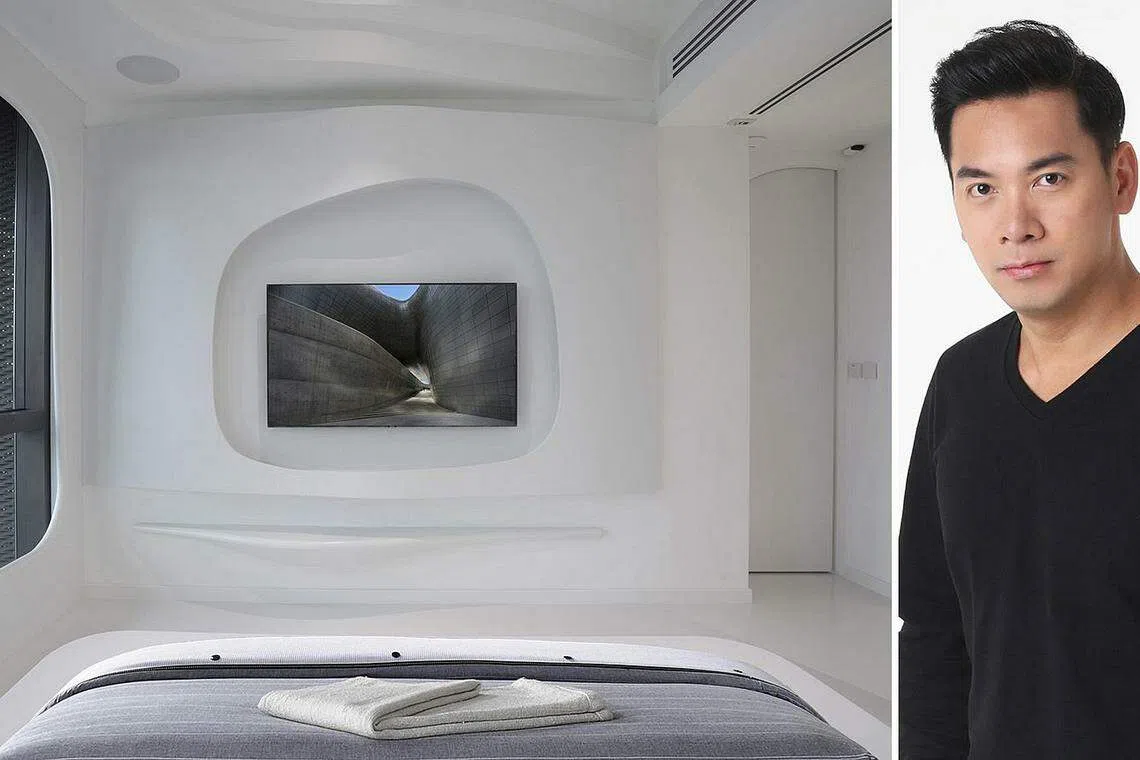
He designed the all-white home, with sleek stripped lighting on the ceilings, organically shaped furniture and beds that appear to float.
Since young, Mr Lai knew he would pursue a career in this field: "I'm drawn to great designs around us, and I hope to inspire and, through my design work, make an impact on the environment and the community."
He describes his design style as "forward-thinking" with a focus on curves. "Curves offer a soft, calm and non-threatening impression. What's most important, however, is to offer a personalised and aesthetically pleasing space for its users," he says.
Besides his portfolio of works, including turning The Arts House into a restaurant for a pop-up event, Mr Lai also wowed the jury with his pro bono work in helping poorer communities.
A few years ago, social enterprise group The Cha Project asked him to design a mobile library for kids in war-torn Kabul. Together with a few partners, Mr Lai came up with the idea of turning an old bus into a library where children could spend time away from their harsh reality and escape into another world through books. After submitting the design, Mr Lai didn't hear back for weeks, and thought his idea wasn't accepted.
It turned out that there had been a bomb blast in the neighbourhood - hence the silence. "The reality of the situation hit me like a lightning bolt," says Mr Lai. "It reinforced my intention to help in social projects while I am still fortunate enough; it was very emotional for me to be able to contribute to the community in need."
Mr Lai hopes that one day he will be able to fulfil his dream project of designing a museum. "The idea of designing a museum is boundless and exciting to incorporate different stories into its creation."
Lionel Leow Principal, TA.LE Architects
Lionel Leow doesn't differentiate architecture from interior design. The principal architect of TA.LE Architects says: "In today's environment, a holistic approach is needed to design a user experience that is seamless and delightful." Mr Leow founded the firm with fellow architect Tay Yanling.
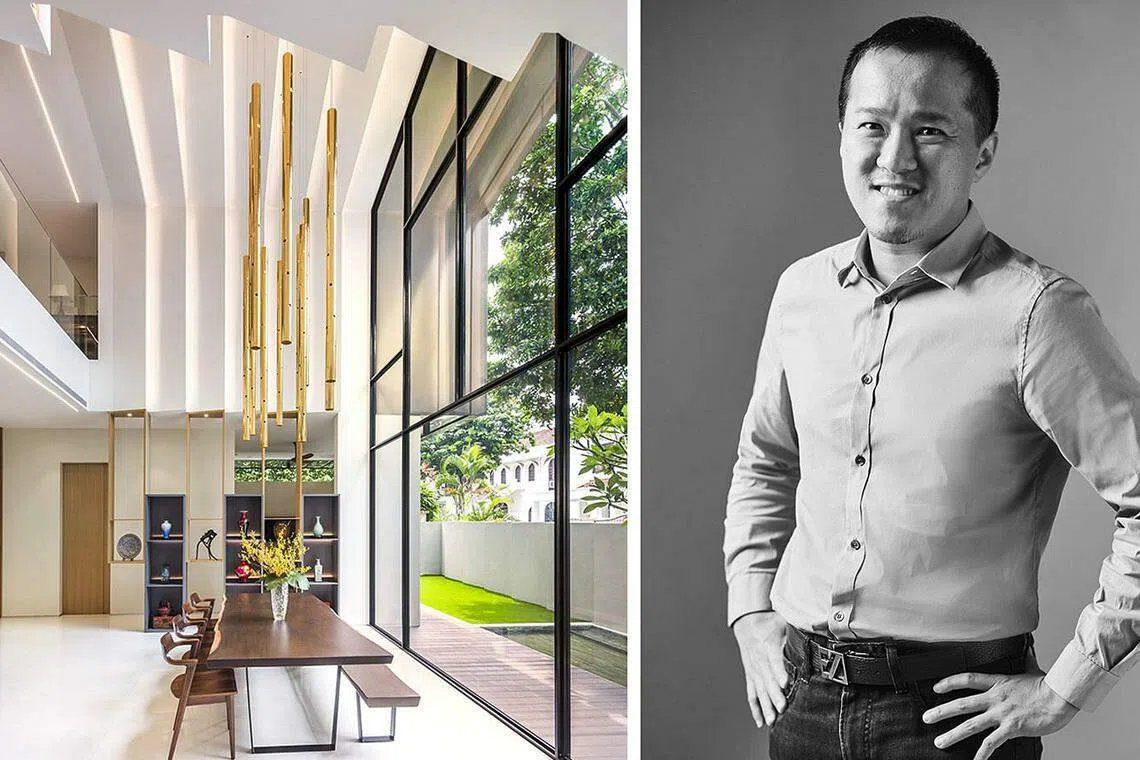
A scroll through the firm's website shows Mr Leow and his team's capability in handling all kinds of projects, such as restoring and revitalising shophouses for modern use; retrofitting the Nordic European Centre office to suit current work needs; designing the interiors of boutique stores and private homes.
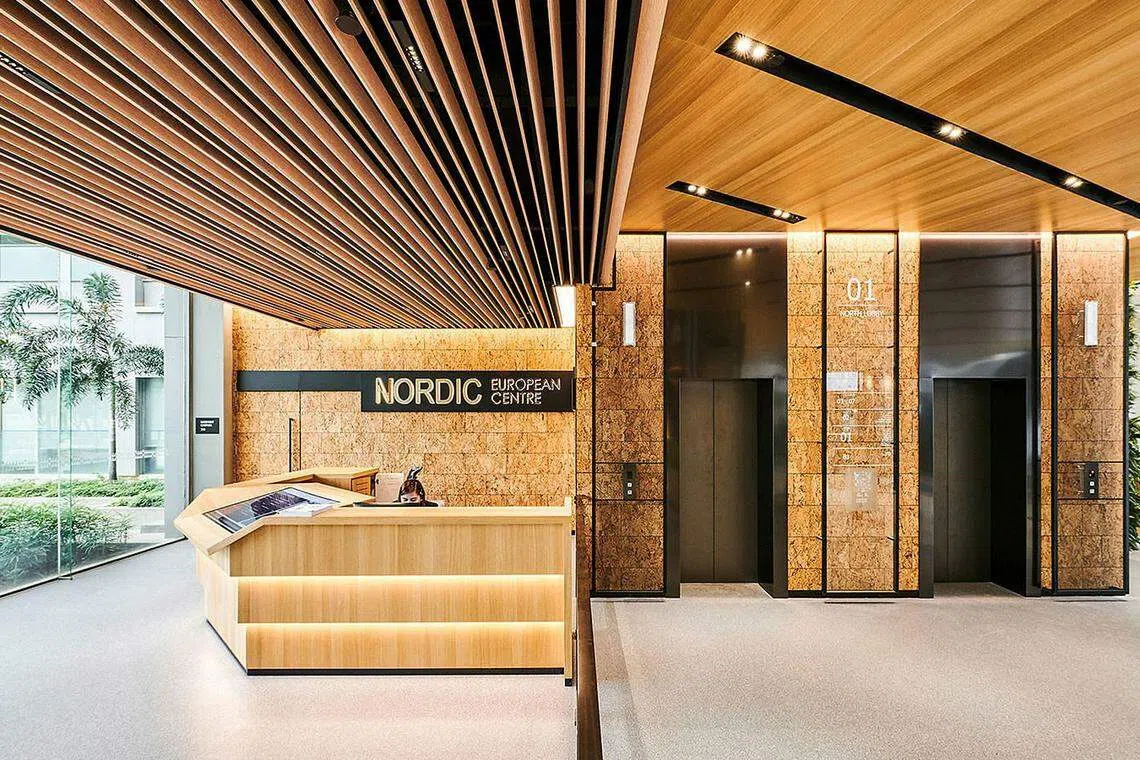
"We do not have a preoccupation with any specific typology of architecture or interior design. We believe in creating value through design in any type of space, and we love to work on both private residences and public projects where we can create a positive impact on the community at large," says Mr Leow, 42.
An upcoming project is the remaking of Palais Renaissance which will be unveiled at the end of the year.
And forget about asking Mr Leow to define his style, which he feels is a superficial way of thinking about design.
"I'm not interested in creating beautiful things without meaning. Instead, I believe in human-centric design that focuses on the needs of the users," he says.
"Just like the name of our practice - TALE - we believe that behind every inspirational well-designed space, there is a meaningful story," he says.
Over the years, the firm has picked up several design awards for various projects.
Mr Leow won the jury over with a portfolio that showed a spirit of experimentation and boldness to push boundaries.
Lee Liting Principal, nitton architects
Three years ago, architect Lee Liting decided it was time to be her own boss, after a decade with a local architecture firm.
"It was a natural step to take," says Ms Lee, 39. "Having your own practice opens up the freedom to test out ideas that are of particular interest. This focus develops maturity in the design language."
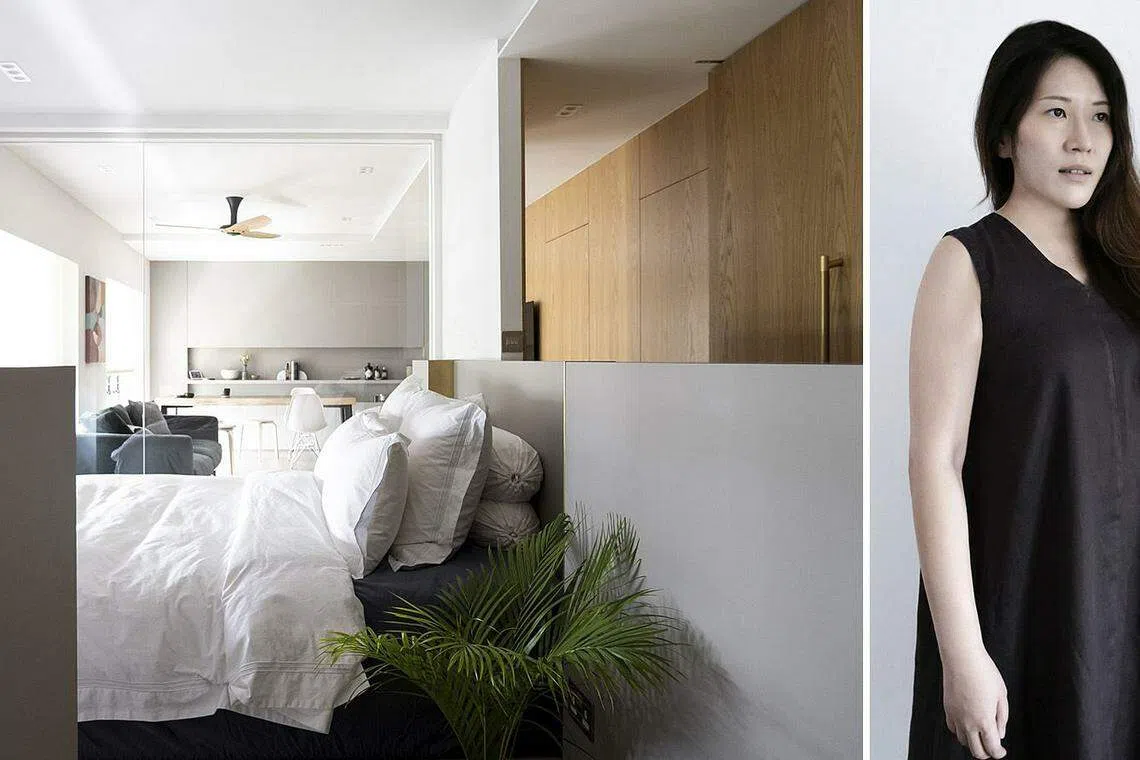
nitton architects focuses on residential projects, experimenting with ideas such as seamless spaces that maintain their functionality, and exploring the relationship between space, natural lighting and activity. "I create homes that have an austerity that is not cosmetic but comes from restraint and a sense of contentment."
For example, in a project titled House in a Flat, Ms Lee created a mini house in a 110 square metre flat to show that "configurable spaces are an experiment to expand the perceived scale of space". She knocked down non-structural walls to create a more expansive space, but also strategically placed sliding partitions and a full-height glass wall to create privacy when needed.
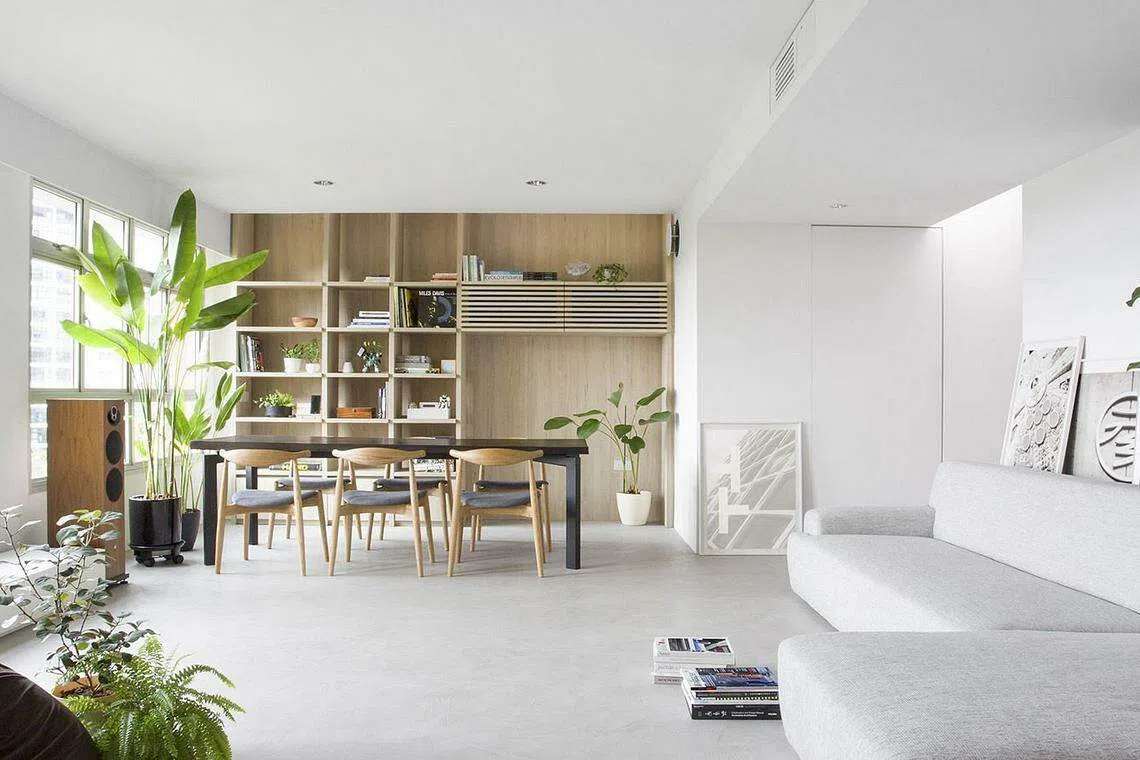
In another project, Midtown Retreat, she tests out different materials such as natural oak veneer and rattan panels, and super matte surfaces to create a finely tuned tension that unifies the various spatial elements.
As a young firm, one of the challenges she faces is balancing a sustainable volume of projects while maintaining an authentic voice. "There is a discussion on the broad design direction with homeowners before we take on each project," she says.
A no-nonsense approach without any ostentatious design is what the jury panel saw from Ms Lee's work. They liked that she has a good command of planning coupled with an honest approach to materiality of the space.
Ms Lee's dream project is one that benefits more than just a family: "I hope to design public spaces that are not tied down by commercial requirements. I wonder how social spaces outside of our work and home can be like in our city."
Decoding Asia newsletter: your guide to navigating Asia in a new global order. Sign up here to get Decoding Asia newsletter. Delivered to your inbox. Free.
Copyright SPH Media. All rights reserved.






